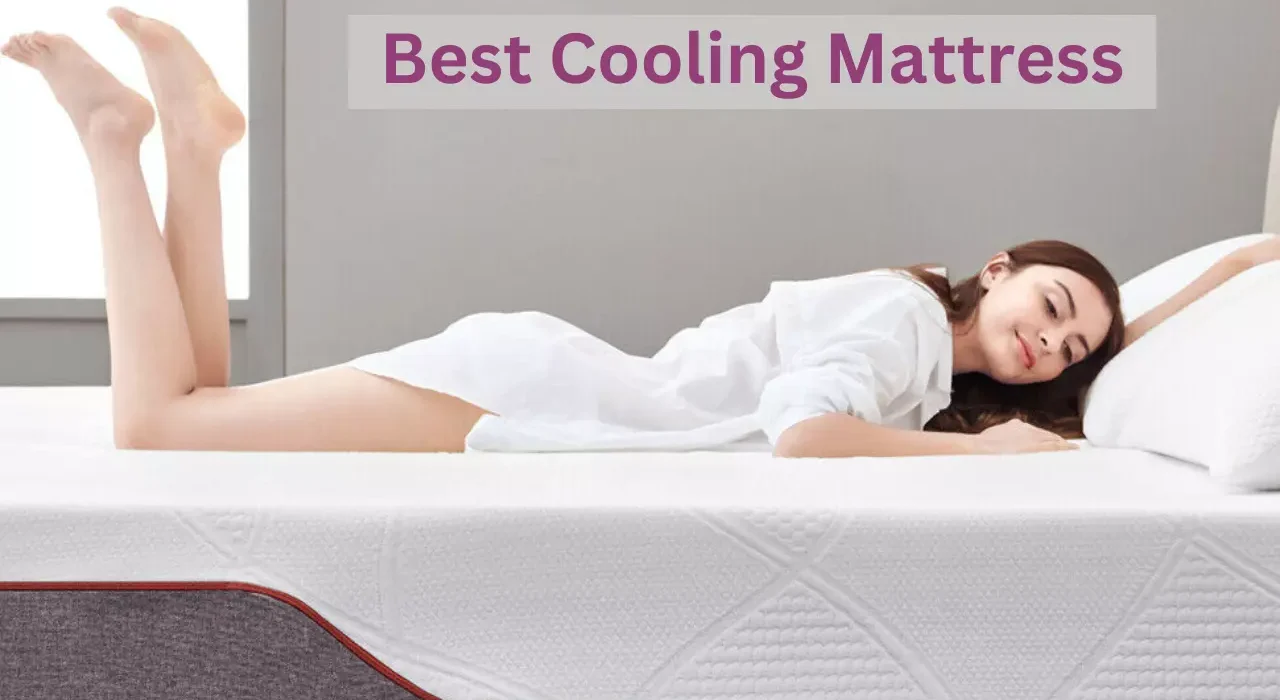No one likes feeling stuck to their sheets or waking up from a night’s sweat. It may be nice to feel cozy, but it’s not nice to feel hot when you’re trying to fall asleep.
Sleeping warm isn’t just uncomfortable; it actually interferes with your sleep. Our body temperature is intricately involved with our sleep-wake cycles. It fluctuates during the day, cooling down at night as our body prepares for sleep. To sleep well, your body needs to be in a cool environment. This is why sleep experts recommend setting your bedroom thermostat to a cool mid-60s degrees Fahrenheit.
Unfortunately, some of us are prone to sleeping hot. So-called “hot sleepers” may sleep hot for a physical reason, such as higher body mass index (BMI) or menopause, or they may simply be one of those people who tend to “run hot.”
Cooling Mattress Buying Guide
What Components Make Up The Best Cooling Mattress?
Mattress manufacturers know people don’t like to sleep hot. That’s why they take care to include more or less of certain components in the mattress to assist with temperature regulation.
However, some mattresses are worse for hot sleepers than others, simply due to the nature of their construction.
Below we’ll review the various components of a mattress and how they rate at heat retention. You want ones with low heat retention, but high heat transfer, indicating the bed’s ability to distribute heat throughout the mattress to provide a cool, uniform sleep surface. If you’re a hot sleeper, keep an eye out for these materials as you shop for your new mattress.
- Coils: Coils are the main support component used in traditional innerspring beds, as well as many hybrid mattresses. There are various types of coil construction and all rate well for heat transfer. Individually wrapped pocket coils tend to provide the most contour of all coil types. With a coil support core, there is a lot of room for air to circulate around them, enabling better airflow and temperature regulation. The larger the coil component in the mattress, the likelier it is to stay cool.
- Latex: Latex foams are sourced from rubber trees. All-latex foam is organic, hypoallergenic, and naturally breathable. However, beds can also be made of synthetic latex foam produced from man-made materials – these are less breathable than organic latex. Latex foams are typically perforated as well, further enabling airflow and circulation.
- Gel-infused foams: Gel is often touted as a cooling element, which is why you’ll see it in many mattresses as well as foam pillows. The gel works similarly to water, absorbing heat without radiating it back out. The heat transfer ability of a gel-infused foam depends in large part on how much gel it contains. The more gel beads in the foam, the cooler the mattress.
- Basic memory foam: Traditional memory foam mattresses are notorious for trapping heat. Memory foam is popular for its ability to contour to the body, but the reason it can do that is because it responds to body heat. When pressure (and heat) from your body is applied to the foam, it reacts by conforming and enveloping around you, further trapping heat.
- Advanced memory foam: Because memory foam gets such a bad rap for trapping heat, manufacturers have developed new iterations that maintain its contouring ability but with less heat retention. Open-cell memory foam provides better air circulation. Copper- and graphite-infused memory foams also help disperse heat.
- Basic poly foam: When it comes to temperature, polyfoam offers a middle ground between latex and memory foam. It’s cooler than memory foam but hotter than latex. Polyfoam has an open-cell structure which facilitates air circulation. However, the density of polyfoam alters its capacity for heat regulation – the denser the polyfoam, the hotter the mattress. Hot sleepers should look out for mattresses with high-density polyfoams in the support layers.
- Advanced polyfoam: Designers offer advanced polyfoam as a better alternative for temperature regulation than regular polyfoam, but it still isn’t recommended for hot sleepers.
If you’re a hot sleeper, it’s not just important that the mattress you choose contain cooling components; where these components lie within the bed itself also matters. The typical mattress contains at least three layers, all enclosed within a cover. You want to have cooling components placed closest to the mattress surface, as that’s where they’ll have the most impact on your own body temperature.
For example, memory foam mattresses are subpar at heat retention, but their contouring ability is unparalleled. As such, many sleepers enjoy the way they conform and envelop their body for support. Some hybrid mattresses aim to improve the heat retention issue by placing cooling gel foams, copper-infused layers, or more above the memory foam layer, thus providing a similar contour to a memory foam bed but with a much cooler sleep surface.

Alternately, hybrid mattresses may address the temperature problem by using an innerspring support core. However, if it is sandwiched between heavy foam layers, the cooling properties of the coil layer will likely be overshadowed.
How Does a Cover Affect Mattress Cooling?
We mentioned above how the placement of the individual layers can affect the overall surface temperature of the mattress. Given that the mattress cover is the closest mattress layer touching the sleeper’s body, it should be of prime importance to hot sleepers
Mattresses tend to contain one of four cover materials:
- Non-quilted covers: Thinner covers facilitate better airflow. As the thinnest cover type, non-quilted covers tend to sleep quite cool.
- Quilted covers: Thicker covers tend to sleep hotter. Quilted covers tend to be thicker than non-quilted covers, especially if they contain poly foam or memory foam for additional comfort. As a result, they often sleep hotter.
- Phase change materials (PCMs): Covers containing PCMs are designed to absorb the sleeper’s body heat up to a certain temperature point, before distributing it throughout the mattress, enabling better temperature regulation while you sleep. This allows the mattress to stay cooler than a quilted cover, although not quite as cool as a non-quilted cover.
- Cooling fabrics: Just as manufacturers infuse copper, gel, or other cooling materials into their foams, they’ve found certain fibers can have a similar effect on the fabric used in the mattress cover. The three main cooling fabrics you’ll encounter include Celliant® fibers, Lyocell, and Lycra® Spandex. Celliant® is made from Thermo-reactive minerals designed to regulate body temperature and air circulation. Lyocell is made from cellulose, a thin material that sleeps cool. Lycra® Spandex may be familiar to athletes, as they see it in much of their clothing. Its moisture-wicking properties help provide relief for hot sleepers prone to night sweats.







